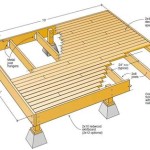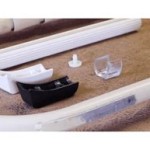Essential Aspects of Patio Fall: Understanding Slope and Drainage
A well-constructed patio requires careful consideration of fall, which refers to the downward slope of the surface to ensure proper drainage and prevent water accumulation. Understanding the appropriate fall for your patio is crucial to avoid moisture-related issues, such as standing water, which can damage the materials and create safety hazards.
Determining the Ideal Fall
The required fall depends on the materials used and the climate in your area. In general, a slope of 1/4 inch to 1/2 inch per foot (2-4 millimeters per 30 centimeters) is recommended for most patio surfaces.
For impermeable materials like concrete or pavers, a steeper fall of 1/2 inch to 1 inch per foot (4-8 millimeters per 30 centimeters) is necessary to ensure efficient drainage. On the other hand, natural stone and permeable pavers require a more gradual fall of 1/4 inch to 1/2 inch per foot (2-4 millimeters per 30 centimeters) to allow for proper infiltration.
Slope Direction
The direction of the fall is equally important. Patio surfaces should slope away from the house, doors, and other structures to prevent water from pooling against them. The fall should also direct water towards designated drainage areas, such as gutters, downspouts, or a dry well.
Grading Techniques
Achieving the correct fall in your patio design requires precise grading techniques. For concrete patios, a slope can be created by adjusting the thickness of the concrete during pouring. This is typically achieved by adding more concrete to one side of the formwork and less to the other.
For patios made of pavers, stones, or other materials, the fall is established by adjusting the sub-base material underneath. The sub-base should be graded and compacted to create the desired slope before the patio surface is laid.
Post-Installation Verification
Once your patio is installed, it's essential to verify the fall using a level or a ruler. Place the level or ruler along the slope and measure the difference in elevation over a specified distance to confirm that the fall is within the recommended range.
Benefits of Proper Fall
Ensuring the appropriate fall for your patio offers numerous benefits, including:
- Prevents standing water and moisture damage
- Reduces the risk of slip-and-fall accidents
- Increases the lifespan of patio materials
- Maintains the structural integrity of surrounding structures
- Improves the aesthetics of your outdoor space
Conclusion
Understanding the essential aspects of patio fall is crucial for creating a functional and safe outdoor space. By following the guidelines provided, you can determine the optimal fall for your specific patio design, ensure proper drainage, and avoid moisture-related issues. Consulting with a professional landscape architect or contractor can provide additional guidance and ensure the best results for your project.

How Much Fall Should A Patio Have Minster Paving

Gradients And Falls Pavingexpert

Gradients And Falls Pavingexpert

How To Lay A Patio

How Much Slope Should A Paver Patio Have Roofing Contractor Chimney Sweep Siding Masonry New Jersey
How Much Should Concrete Fall Construction

Should A Patio Slope Towards The House All Dry Usa

How To Build A Patio In Weekend Finegardening

How Much Does It Cost To Build A Deck Forbes Home

Should A Patio Slope Towards The House All Dry Usa
See Also








